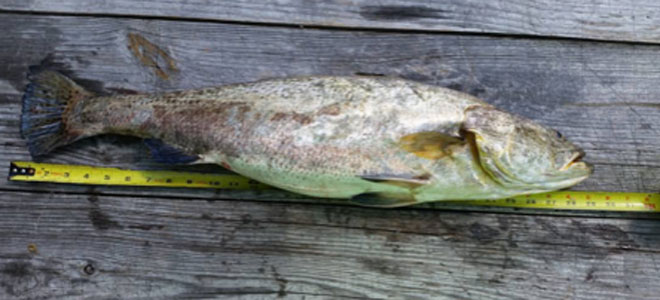
LDWF biologist discusses trout size, spawning information
When LouisianaSportsman.com reported that a long-time Schriever angler reeled in a monster 29-inch speckled trout that weighed 10 pounds in Pointe-aux-Chenes last month — and promptly decided to eat the fish rather than release it or even get it mounted — armchair internet biologists pounced.
Many folks came down pretty hard on Ted Samanie, suggesting he should have absolutely released the fat sow trout to spawn this spring — despite any regulations from the Louisiana Department of Wildlife and Fisheries requiring him to do so.
The only thing Department literature states is the bag limit is 25 specks per day, with the fish needing to measure a minimum of 12 inches to qualify as a keeper. (In defined areas of Cameron and Calcasieu parishes, where the daily bag limit is only 15 fish, anglers can keep no more than two trout exceeding 25 inches in length.)
So what – if any – is the impact on the trout population if an angler decides to place a trophy trout in an ice chest rather than taking a picture with it and turning it loose?
Should female specks over a certain weight automatically be given a free pass because of their egg-laying prowess?
Or should anglers consider releasing younger females — in the 2- to 3-pound range — because they represent the backbone of the state’s spawning population?
We decided to talk with an actual biologist — as opposed to the “internet experts” who came out of the woodwork to take cheap shots at Mr. Samanie — and have Jason Adriance, LDWF’s Finfish Program Manager in New Orleans, share his thoughts on the subject.
“In general, larger fish do produce more eggs,” Adriance said. “However, that doesn’t mean just because that larger trout spawns more eggs that they’re any more successful eventually recruiting. Recruitment is so environmentally driven. That’s what’s going to determine how successful a year class is — those environmental factors.
“Wherever that young trout ends up post-larval or as a juvenile, those environs and conditions are going to have more influence on whether it’s eventually a successful recruit …. There is nothing to indicate those eggs would be any more successful than any other eggs.”
In other words, if Samanie had released his 10-pounder to spawn — and it laid millions and millions of eggs now all the way into September in an area with low salinity, or in a location where they were devoured by predators, or where food sources for the tiny specks were scarce or where over-wintering conditions were poor — that big fish might actually be less successful in creating new recruits than a much younger, lighter trout that laid fewer eggs in an environment more conducive for development.
“Obviously, we allow folks to keep fish that size. There’s no regulation against it,” Adriance continued. “We manage it so that you can keep 25 fish over 12 inches. If we saw an issue with it, we’d have different limits.
“It’s probably more important that what makes up the heart of the spawning population be out there rather than those few oddities — with the caveat that overall, when it comes down to recruitment, it’s so environmentally driven.”
Adriance also shared some additional information that speckled trout anglers might be surprised to find out:
— About 50 percent of females are mature enough to spawn when they reach 8 inches in length, or less than 1 year old.
— The lifespan of a speck, depending on what literature you read, is about 9 to 10 years. “We generally don’t see any that we age over 7 or so,” Adriance said. “But that doesn’t mean they’re not out there.”
— Female trout that are 16 to 20 inches long are typically 2 to 3 years old. A 20- to 24-inch female is usually in the 3- to 6-year range. “Females grow a little faster quicker, and in general, get bigger,” he said.
— Fish that manage to reach 4 or 5 years of age are extremely rare. “That’s probably 1 or 2 percent of the population — if that,” Adriance said.
The LA Creel program, where LDWF biologists gather “real time” data on anglers’ daily catches at docks across the coast, provides key information regarding the size of fish being caught statewide.
“We can kind of get an idea of percentage and size by sampling,” Adriance said. “That’s where it comes in when biologists at the dock are looking at your catch and actually measuring your fish, and take the otoliths (ear bones to determine age) from your fish. It’s giving us an idea of the characteristics and size for that day, including length information.”
So the bottom line is if it makes you feel good taking a picture of a trophy speck and releasing it to swim another day in hopes that it will help produce gobs of specks for years to come — great. Go for it.
But if someone else makes the decision to keep their trout of a lifetime, either to mount or grill up with butter and almond slices, that’s also fine— and well within their legal rights. (Remember, there’s no guarantee that a giant fish will be any more successful in spawning than the 2- and 3-pound female specks that are routinely stacked in ice chests across the coast without so much as a second thought.)
So congratulations on an awesome, well-deserved fish, Mr. Samanie. I hope you enjoyed every bite.


